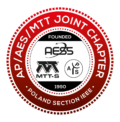Distinguished Lecture at Warsaw University of Technology “An Introduction to Track-to-Track Fusion and the Distributed Kalman Filter” by Dr. Felix Govaers
On 4th April 2025, the Faculty of Electronics and Information Technology at Warsaw University of Technology hosted a distinguished lecture by Dr. Felix Govaers from the Fraunhofer Institute for Communication (FKIE). The lecture addressed challenges in distributed tracking and the increasing demand for efficient state estimation methods in modern sensor networks and IoT systems.
Dr. Govaers presented a comprehensive overview of the Distributed Kalman Filter (DKF) and its advantages over centralized fusion systems, particularly in scenarios with limited communication. He also introduced newer methodologies based on Accumulated State Densities (ASD) and discussed practical aspects of tracklet fusion—a method that often yields reliable results even under incomplete communication.
The lecture not only explored theoretical foundations but also provided practical algorithms and insights into the robustness of distributed estimation systems. Participants gained valuable knowledge on how distributed architectures can support real-time tracking and decision-making in complex environments.
The event brought together students, researchers, and professionals in the fields of signal processing and sensor fusion, providing a unique opportunity to learn from one of the leading experts in the domain. In total, we hosted almost 30 people during the lecture.
About the Speaker:
Dr. Felix Govaers earned his PhD in Computer Science from the University of Bonn and currently serves as Deputy Head of the Sensor Data and Information Fusion Department at Fraunhofer FKIE. His work focuses on data fusion in distributed sensor applications, with particular interest in state estimation, nonlinear filtering, and real-time tracking. Dr. Govaers also actively contributes to the IEEE Aerospace and Electronic Systems Society and regularly presents at the FUSION conference.



